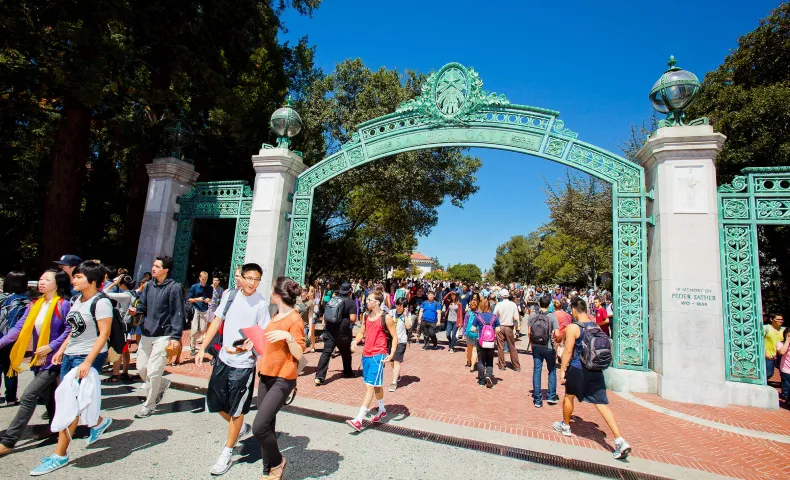
Building Bridges on Campus
With a diverse and global student body that includes more than 40,000 undergraduates, the University of California, Berkeley, is working diligently to create a more welcoming and inclusive campus. It’s all part of a visionary plan led by Chancellor Carol T. Christ to expand and advance diversity and inclusion at the renowned public institution.
As part of that work, professor and world-renowned race scholar john powell is leading the design of experiments in “bridging.” With the Covid-19 crisis and the fight for racial justice highlighting stark divisions across society, the goal is to support students from different backgrounds and identities to expand their friendships and networks.
In the following interview, powell, professor of law and professor of African American and Ethnic studies at the university, reflects on the value of this work and offers some initial ideas about what bridging will bring to Berkeley.
What is “bridging” and why is this work important right now?
Our country is more divided than at any time since the Civil War. We are seeing toxic polarization, fragmentation and a rise of what is often called identity politics, and it is being encouraged and amplified by very powerful voices. The problem is not identity politics per se but what I call “breaking politics.” With Covid, we now have an opportunity to aggravate this crisis or to see how we might come together to solve a problem that impacts us all.
With bridging you build people’s ability to connect with those from different groups. You try to break down the “othering” that happens when groups don’t associate or interact with each other, and at the extremes when one group decides that those people over there aren’t people any more.
What does it mean to do this work on a college or university campus?
Colleges and universities are an intriguing place to do this work. They are places where we bring diverse students and faculty together on campus, but there’s a tendency for everyone to self-isolate with others who are like them in fundamental ways.
Campuses also are places where many people can feel very marginalized. If you are underrepresented on a campus, whether it’s because you are a person of color or LGBT or an undocumented immigrant, it is easy to feel othered. And in that respect, college can become a very toxic environment if we don’t make a conscious effort to connect people.
What kinds of experiments are you thinking about for UC Berkeley?
We’re looking at all kinds of ideas. Consider what happens when you create dedicated spaces for specific groups of students, like houses focused on specific aspects of identity. How do you make sure those students have good opportunities to connect across identities with other students? Some of these efforts have been tried at other universities and we may be able to learn from their successes and limitations.
When it comes to curriculum, students of color are usually the majority of students in ethnic studies classes, while the “prestige” departments and courses tend to de-emphasize the stories and perspectives of marginalized communities.
I recently talked with a Ph.D. student in world philosophy and I asked about his studies of Confucianism. He said he hadn’t studied it, despite the fact that its teachings are embraced by billions around the world. That’s just not right.
So we have to be able to find ways for people to learn, value and embrace their history and culture while also learning, valuing and embracing the histories, cultures and perspectives of others.
Where are you with this work right now?
A big focus in the coming year is going to be advancing the conversation on campus about what this work can be. We are thinking about identifying a team of diverse students who can help brainstorm and test ideas. Then I think the key will be to start with what I call “short bridges.” Sometimes people think this work means they need to engage immediately with people whose politics and whose world view are so contrary to their own that it seems impossible.
We need to be careful about what we are asking people, and we want to make sure they aren’t feeling pressured to do the most difficult things starting out. We also want to emphasize that bridging is everyone’s job. It’s not about asking marginalized communities who are traumatized to put all that aside and try to engage with the dominant culture that makes them feel that way. There is a lot of complexity and nuance, but bridging is a job for all of us.